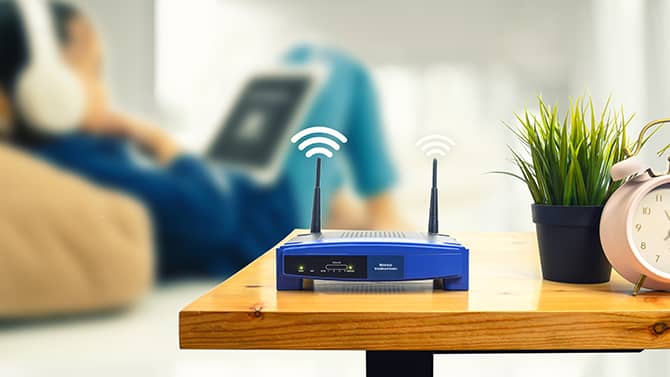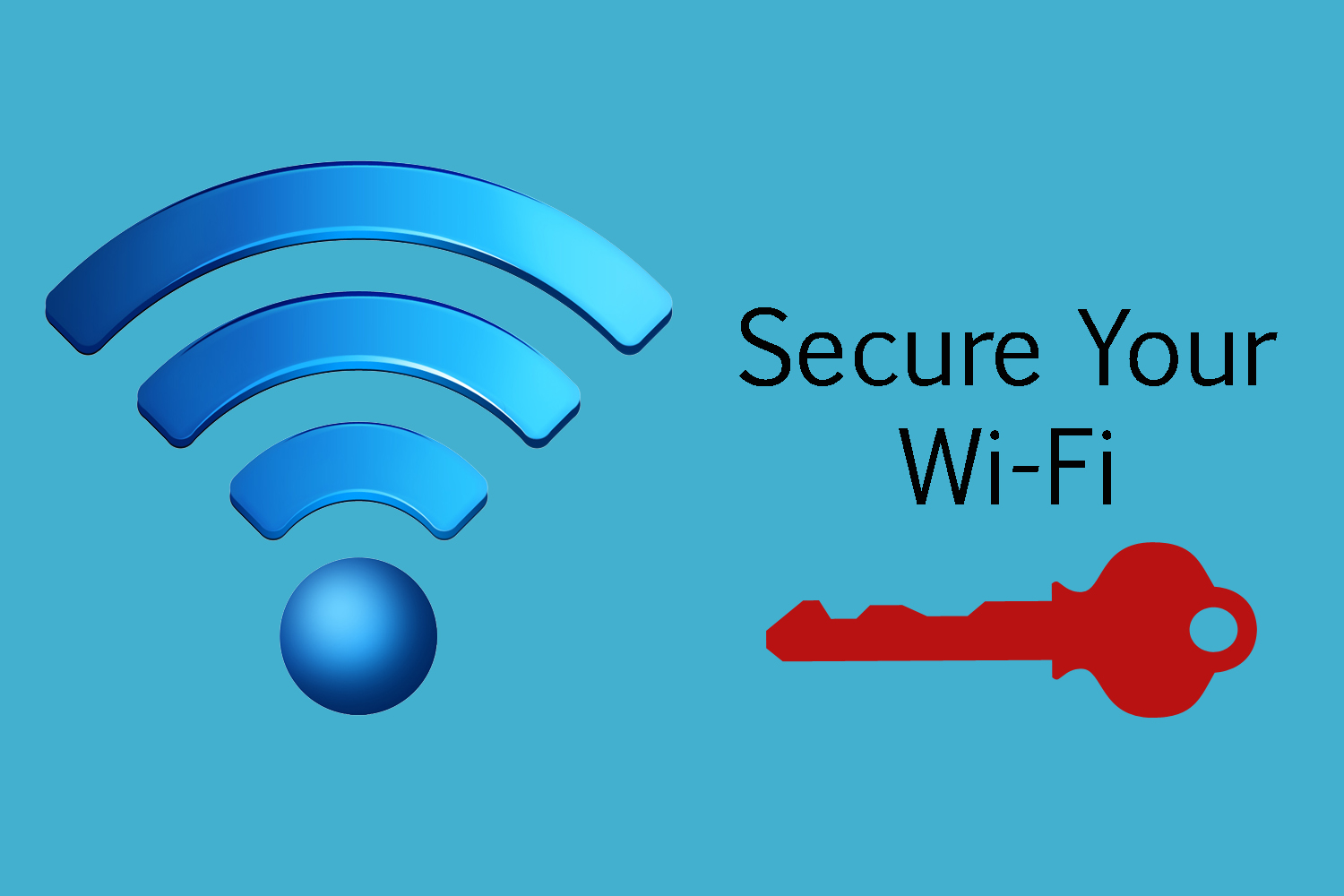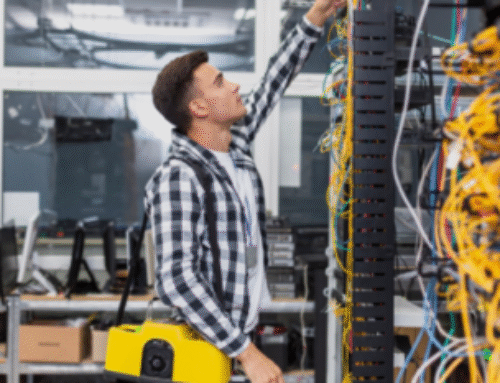
How to Secure Your Wi-Fi Network at Home
How to Secure Your Home Wi-Fi: Router & Wireless Network Wi-Fi Security
In today’s interconnected world, your home Wi-Fi network serves as the gateway to your digital life. Securing your home Wi-Fi is not merely a technical task but a fundamental step in protecting your personal information and ensuring the safety of your home devices, particularly when using public wi-fi. Teamwin Global Technologica understands the critical importance of securing your home Wi-Fi network and will walk you through how to change the default security settings.
Understanding Your Wi-Fi Network
What is a Home Wi-Fi Network?
A home Wi-Fi network is a wireless network that allows devices within your home, such as computers, smartphones, and smart home devices, to connect to the internet without physical cables, ensuring secure wi-fi access. It utilizes radio waves to transmit data between your devices and the router, creating a convenient and accessible home wifi environment. Securing your home wifi network is critical, as it acts as the central nervous system for your home’s internet access, potentially exposing all connected devices to security risks if not properly protected.
Components of a Wi-Fi Network
A typical Wi-Fi network consists of several key components working in harmony. The table below summarizes the roles of some of these components. Then there are the devices on your network, such as laptops, smartphones, and smart TVs, which connect wirelessly. Each component plays a crucial role in the functionality and security of your home wi-fi network. Understanding these components is the first step in securing your home wi-fi connection and ensuring network encryption is properly implemented.
| Component | Role |
|---|---|
| Router | Central hub, managing network traffic and providing internet access. |
| Access Point: A crucial element in establishing a secure wi-fi connection within your home network. | Broadcasts the wireless signal, allowing devices to connect. |
The Role of the Router in Wi-Fi Security
The router plays a pivotal role in Wi-Fi security, acting as the gateway for devices to connect to your wi-fi network. It’s the gatekeeper, controlling who can connect to your network and what data can pass through. The router uses security protocols like WPA2 to encrypt data, preventing hackers from intercepting your personal information. Configuring your router’s security settings, such as setting a strong wi-fi password and regularly updating firmware, is essential for securing your home network. Ignoring router security can leave your entire network vulnerable, especially if you are using public wi-fi networks. Therefore, securing your wi-fi begins with a correctly configured and maintained router.
Essential Wi-Fi Security Settings
Changing the Default Network Name
One of the first steps in securing your home wi-fi network is to change the default network name, also known as the SSID. The default name is often generic and readily identifiable to hackers, providing them with a starting point for potential security breaches. By changing the default, you can make your wi-fi network more secure, safeguarding your personal information and devices on your network. Access your router settings through a web browser to change the network name. This simple act significantly enhances your home wi-fi security and makes it more difficult for unauthorized users to even attempt to connect to your network.
Setting a Strong Wi-Fi Password
Setting a strong wi-fi password is a crucial aspect of securing your home wi-fi. A weak or easily guessable password makes your wireless network vulnerable to unauthorized access. Aim for a password that is at least 12 characters long and includes a mix of uppercase and lowercase letters, numbers, symbols, and a secure wi-fi network password. Avoid using personal information like your birthday or address. Regularly change your wi-fi password to further enhance your home network security and maintain a secure wi-fi environment. A strong password acts as the first line of defense, preventing hackers from accessing your home wifi and protecting the devices on your network. Teamwin Global Technologica emphasizes the importance of a robust wi-fi password for securing your wi-fi connection.
Implementing WPA2 Encryption
Implementing WPA2 encryption is vital for securing your home wi-fi. WPA2, or Wi-Fi Protected Access 2, is a security protocol that encrypts data transmitted over your wireless network. This encryption prevents hackers from intercepting and reading your personal information. Ensure that your router uses WPA2, as it offers a more secure encryption method compared to older protocols like WEP. When setting up your wi-fi router, select WPA2 or WPA2/AES as the encryption type. This security setting ensures that your home wi-fi network is protected against unauthorized access and data breaches. For optimal security, Teamwin Global Technologica recommends using WPA3 if your wireless router supports it.
Additional Measures to Secure Your Wi-Fi
Creating a Guest Network
Creating a guest network is a strategic move to enhance your home wi-fi security without compromising your main network. A guest network provides internet access to visitors without granting them access to your personal files, home devices, or router settings, ensuring a secure wi-fi environment. This segregation minimizes the risk of malware spreading from a guest’s device to your home network. Most wi-fi routers allow you to easily set up a guest network through the router settings. Ensure the guest network also uses a strong wi-fi password and WPA2 encryption. By implementing a guest network, you secure your home wi-fi while still offering convenient internet access to your guests, thereby enhancing your home network security.
Disabling WPS for Enhanced Security
Disabling Wi-Fi Protected Setup (WPS) is a crucial step in securing your home wi-fi. WPS is a feature designed to simplify the process of connecting devices to your wireless network, often using a PIN. However, WPS is known to have security vulnerabilities that hackers can exploit to gain unauthorized access to your wi-fi network. By disabling WPS through your wireless router settings, you eliminate this potential security loophole and enhance your network encryption. While it may make connecting new devices slightly more complex, the enhanced security it provides is well worth the trade-off. Teamwin Global Technologica strongly recommends disabling WPS to secure your wi-fi from potential security breaches and ensure your devices on your network are secure.
Regularly Updating Router Firmware
Regularly updating your router firmware is vital for maintaining robust wi-fi security. Router manufacturers frequently release firmware updates to patch security vulnerabilities and improve overall performance. These updates often address newly discovered threats and enhance the router’s existing security protocols. Neglecting to
Best Practices for Maintaining Wi-Fi Security
update your router firmware leaves your home wi-fi network vulnerable to known exploits. Check your router manufacturer’s website or the router settings interface for available updates. Enabling automatic updates, if available, ensures your router is always running the latest security software. This proactive approach significantly strengthens your defense against potential security threats and secures your home wi-fi connection through effective network encryption.
Monitoring Connected Devices
Monitoring the devices connected to your network is a fundamental practice for maintaining your home wi-fi security. Regularly reviewing the list of connected devices in your router settings allows you to identify any unauthorized or unknown devices. If you spot a device you don’t recognize on your secure wi-fi network, immediately disconnect it and investigate further. Some advanced routers offer features like device naming and access control, making it easier to manage and secure your home wi-fi. By actively monitoring connected devices, you can quickly detect and respond to potential security breaches, ensuring your home wifi and personal information remain protected from hackers. This vigilance is an essential element of securing your home.
Using Network Security Protocols
Using robust network security protocols is essential for securing your home wi-fi. WPA2 is the most widely recommended protocol, offering strong wi-fi encryption to protect your data from interception. Ensure your wi-fi router is configured to use WPA2 or, ideally, WPA3 if your router supports it, as this protocol offers enhanced encryption and security features compared to its predecessors like WEP. Avoid using older protocols, as they are easily compromised. Regularly review your router settings to confirm that the strongest available security protocol is enabled. Utilizing robust network security protocols is a cornerstone of safeguarding your wireless network. Proper implementation of these wi-fi security measures is crucial for securing your home wi-fi connection.
Conducting Regular Security Audits
Conducting regular security audits is an important practice for maintaining your home wi-fi security. A security audit involves systematically reviewing your wi-fi settings, passwords, and connected devices to identify potential vulnerabilities. Change your wi-fi password regularly, ensure your router firmware is up to date, and verify that all devices on your network are legitimate. Consider using a network scanning tool to check for open ports or other security weaknesses. By conducting regular security audits, you can proactively identify and address potential security risks before they can be exploited. This proactive approach is essential for securing your home wifi and protecting your personal information from unauthorized access, thereby securing your home.
5 Surprising Facts About How to Secure Your Wi-Fi Network at Home
- Many people use the default Wi-Fi password provided by their router, making it easy for hackers to gain access.
- Enabling WPA3 encryption offers a higher level of security compared to older protocols like WEP and WPA2.
- Changing your SSID (network name) can help obscure your network and make it less attractive to attackers.
- Regularly updating your router’s firmware can fix vulnerabilities and improve security features.
- Using a guest network for visitors can help protect your main network from unauthorized access.
How can I change the default password for my wireless network?
To change the default password for your wireless network, first, access your router’s settings by entering its IP address into a web browser. Once logged in, navigate to the wireless settings section and look for the option to change your wireless network password. Make sure to choose a strong password that combines letters, numbers, and special characters to enhance your network security.
What simple steps can I take to secure my home Wi-Fi network?
Securing your home Wi-Fi network can be achieved through several simple steps. Start by changing the default password for your wireless network, enabling WPA2 encryption, and regularly updating your router’s firmware. Additionally, consider hiding your network name (SSID) and creating a guest network for visitors to limit access to your main network.
How does using a virtual private network (VPN) protect my Wi-Fi connection?
Using a virtual private network (VPN) adds an extra layer of security to your Wi-Fi connection by encrypting your internet traffic. This means that even if someone gains access to your router, they cannot easily intercept or read your data. A VPN is particularly useful when using public Wi-Fi networks, as it helps protect your personal information.
What is the best security protocol for my home Wi-Fi network?
The best security protocol for your home Wi-Fi network is WPA2 (Wi-Fi Protected Access 2). It provides strong encryption to protect your data from unauthorized access. Make sure your router is set to use WPA2, and if available, consider upgrading to WPA3 for even better security.
How can I access my router to secure my network?
To access your router and secure your network, connect to your Wi-Fi network and enter your router’s IP address in a web browser. You will need to log in with your credentials, which are often found on the router itself. From there, you can modify security settings, change your Wi-Fi password, and enable encryption protocols.
What steps should I take to protect my network from outside access?
To protect your network from outside access, ensure you have a strong, unique password for your Wi-Fi network and change it regularly. Enable WPA2 encryption, disable WPS (Wi-Fi Protected Setup), and consider hiding your SSID. Additionally, regularly updating your router’s firmware can help patch security vulnerabilities.
Can I create a guest network to keep my main network secure?
Yes, creating a guest network is an effective way to keep your main network secure. This allows visitors to connect to the internet without accessing your primary network and its connected devices. You can set a separate password for the guest network, which can be changed frequently for added security.
What is network encryption, and why is it important?
Network encryption is the process of encoding data transmitted over your network to prevent unauthorized access. It is important because it protects sensitive information, such as passwords and personal data, from being intercepted by hackers. Using strong encryption protocols like WPA2 or WPA3 is essential for maintaining the security of your home Wi-Fi network.







